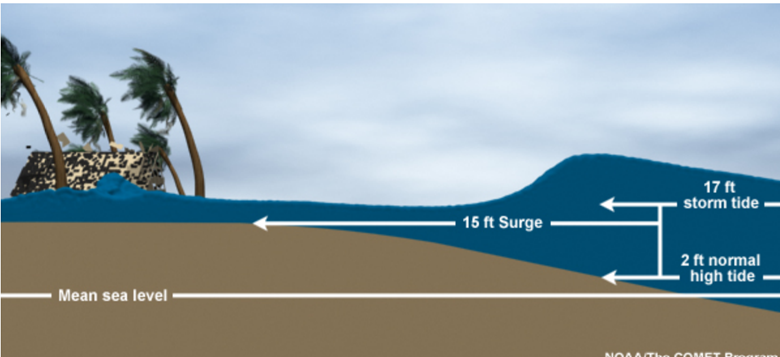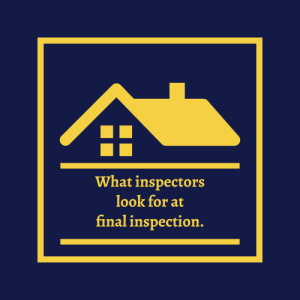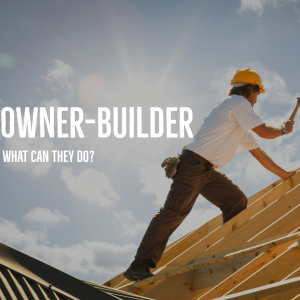NOVEMBER 2022, issue 2
ELITE PERMITS
BRIEFING ON CONSTRUCTION & Some other stuff
Written by TATIANA gUSt
With another storm on the horizon, I want to take this time to explain storm surges:
The news in their desire to provide information, often do so in a context that is not clear for everyone. I have been working in construction and everything associated to the building codes for over 18 years, I’m accustomed to the language and what it meant, but never thought about explaining it to the people closest to me.
I am originally from Chile. We are used to earthquakes but not necessarily hurricane or storms. Chile has a very long coastline, but I don’t ever remember being scared for a warning of storm surge.
Years ago, my mom and younger brother had their first experience with a hurricane and at the time I did not realize how much the news of storm surges scared them. In 2017 when hurricane Irma was coming to Florida, my mom and brother (21 at the time) were in Naples, and I had told them not to worry about the storm coming. At the worst we will have high winds, maybe some roof damage and we were far enough inland that if we got any water from the surge it was going to be just a couple of feet. As I was waiting for the storm, the next thing I know, I receive a call that my mom and brother are on their way up to Georgia trying to avoid the deadly storm that was coming our way. I guess they didn’t want me to talk them out of leaving the area.
Their reasoning was as follows: They were located less than 5 miles from the coast and their house had 8-foot ceiling, the top of the roof was about 13 feet at the most and the news kept saying that the storm surge could get for several miles inland to a height between 12 feet to 20 feet.
Without further explanation what comes to your mind?
The news was providing accurate information, however without the proper explanation of context the interpretation was… I can’t possibly survive this! 12 feet is the minimum height that the water could reach with the potential to reach even higher. Scary, isn’t it? Under those conditions, not even the strongest swimmer can survive. Instinctually, they fled the area to wait the storm out in another state.
Let’s clarify the terminology for storm surge.
The definition per the National Oceanic and Atmospheric Administration (NOAA), for storm surge is an abnormal rise of water, generated by storm, above the predicted astronomical tide.
There is reference point called mean sea level, this is an average surface level of water that can be used to measure changes in tide elevations. When there is a high tide, it is a number against this mean sea level (reference point) and the SURGE is the increase from the projected tide (high or low depending on the storm). Thus no one uses a point of reference to refer to storm surge because it is a variable number.
In simple words: The surge is how much higher than the predicted tide of that day due to the storm. So much simpler and easy to understand, right?
Reflecting on the example of my mom and brother, the surge was still about 12 ft, however, keep in mind that a house near the coastline is already about 5-7 feet higher than the mean sea level, and as you go inland the ground rises higher, therefore this number is only relative to the position of the sea level, and not necessarily from the ground where you are located.
Even though the news stations were providing accurate information, my mom and brother were never at risk since they were located at a much higher level than the current projected tide for that day.

Math is our friend:
You are in a house right next to the ocean (as we mentioned before the houses by the beach at ground level are already higher than the mean sea level).
Let’s assume the house is already 7 feet above the mean sea level, the tide for that day is 2 feet above mean sea level and there is a predicted storm surge of 15 ft. What can we speculate having the knowledge that the surge is just the additional height of the predicted tide that day?
We would add the predicted storm surge to the reported tide for that day. 15ft plus 2 ft = 17ft above mean sea level (storm tide)
Then subtract the house’s ground height from this Storm tide. 17ft minus 7ft.
Because of the slope of the grade near the beach, and that house is already at 7 feet higher from the main sea level, the difference is 10 feet. This is the actual height of water that may come against the house.
In other words the actual storm surge is 10 feet (at that location), and as you go inland where the ground is higher, the surge is less and less. This is the main reason why houses near the beach are built elevated and/or the first floor is just storage, so the water comes in and out without significant damage to the living space.
Final Thoughts:
The storm surge height is not measured from the ground where you are located, but from a reference point to the reported tide for the day. As you get farther away from the beach the ground goes higher and higher.
It is still important to be alert when there is a potential of surge. If it is recommended or required that you evacuate due to the circumstances of storm surge, please take it seriously.
Share the knowledge and let me know if there is any other topic you would like me to discuss on out next blog.
Tatiana







